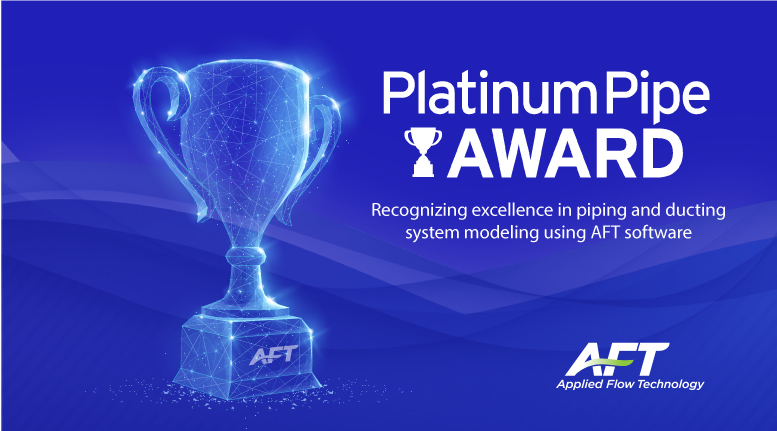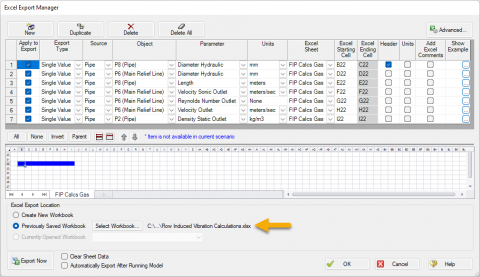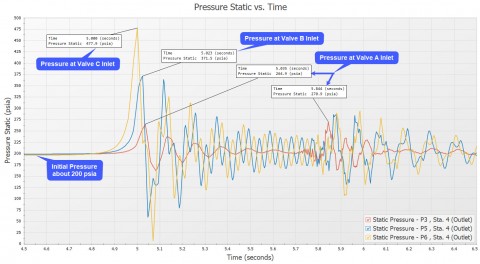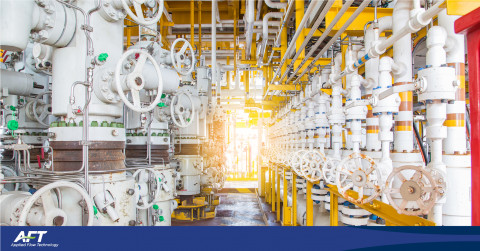AFT Blog
One of the new features in AFT Fathom 9 was the ability to model equivalent lengths instead of K factors for various types of fittings. Since AFT Fathom's existence, the standard K factor loss models have been used to quantify the pressure losses across a fitting such as an elbow, a valve, etc. One of the reasons why the K factor method is very useful is because it is broad and applicable to a wide range of different fittings. However, the equivalent length method is also a way that engineers will typically quantify the losses through their fittings and they will...
The process of sizing a pump for the application of priming a piping system as well as for normal operation is slightly more involved than if the system was already primed and the pump was to be sized for a liquid full system. For a system priming application, the intermediate elevations at high points in a piping system are relevant in regard to the pump that is used. If a pump is not able to generate enough head in order to overcome the high intermediate elevation points in a system, then the pump will provide no benefit to the system, even...
I am writing this from over 30,000 feet (actually 35,001 feet/10,667 meters according to my video map) over the Atlantic Ocean and on my way to Europe. The recent vote of the UK citizenry to leave the European Union (EU) is a hot topic at the moment (what everyone has been calling BREXIT). And I just finished reading yet another article on BREXIT. So I decided to digest some of what I have gathered in an article and here it is.
Previously, we talked about the Graph Guide and how to create Stacked Graphs. Another way to see the interactions between parameters is to show them on one graph with dual Y-axes and a common X-axis scale. I am going to again start with the AFT Impulse model, ‘Pump Startup With Event Transient.imp’, which is installed in the Examples folder, and use the ‘One Pump Start With One Running’ scenario. In the previous blog, we used a Stacked Graph to examine the pressures and flows at two valves (J6 and J9), which opened during the simulation. This time, we will put them...
Using graphs that are stacked on top of each other is a great way to see the variation of several parameters at once and how one interacts with the others. There are several ways to create stacked graphs using the new graphing features in AFT applications, which I will cover here. I am going to start with the AFT Impulse model, ‘Pump Startup With Event Transient.imp’, which is installed in the Examples folder. I am going to use the ‘One Pump Start With One Running’ scenario. We will first compare the flow and pressure in the pipe path from the Supply...
My career has been spent applying engineering principles to predict the future - specifically how actual or planned physical systems will respond in the future. Such predictions of course allow engineers to make decisions on safety, energy, environmental impact, and cost. Physical systems follow the laws of physics. Compared to other areas of human endeavor like oil, politics, and the economy, engineering is easy.
The primary way to view results when using Impulse is through graphical data. With the release of AFT Impulse 6, the power of the graphing features has been greatly increased. With this enhanced capability comes additional complexity. It is a kin to the power and complexity of in-dash radio consoles in modern cars compared to the old stereo in my old Ford Pinto. To help users navigate the new capabilities of this powerful graphing tool, we have developed a ‘Graph Guide’ which points out the steps to accomplish many of the common tasks in creating, modifying and keeping graphs. The Graph...






